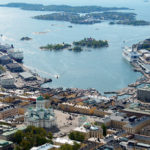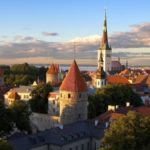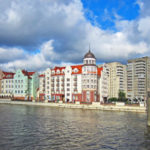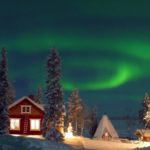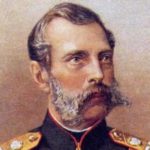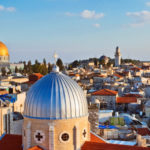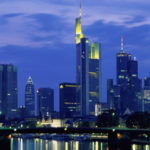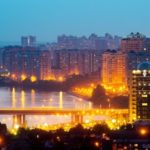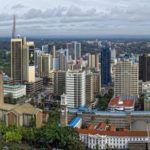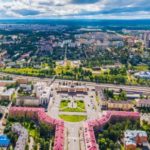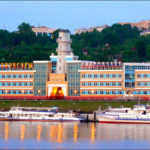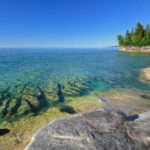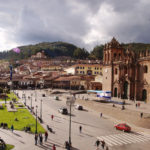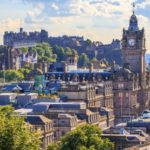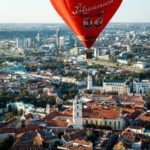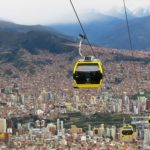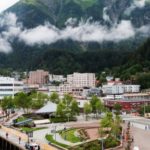Top-Rated Tourist Attractions in Helsinki
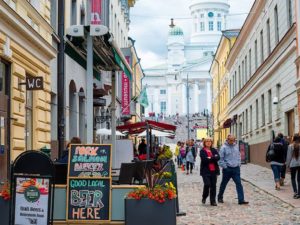 Helsinki, although the capital is Finland, but by world standards it is a rather small city, because it is home to a little more than 600 thousand. However, the cities of the satellites Kauniainen, Espoo and Kauniainen form the so-called Greater Helsinki with a population of over 1,300,000 people. The location of the city on the shores of the Gulf of Finland of the Baltic Sea resulted from the fact that the history of Finland was always associated with the sea.
Helsinki, although the capital is Finland, but by world standards it is a rather small city, because it is home to a little more than 600 thousand. However, the cities of the satellites Kauniainen, Espoo and Kauniainen form the so-called Greater Helsinki with a population of over 1,300,000 people. The location of the city on the shores of the Gulf of Finland of the Baltic Sea resulted from the fact that the history of Finland was always associated with the sea.
For a long time Finland was Swedish and then its capital was Turku, and on the site of present-day Helsinki was the fortress of Sveaborg and the small town of Helsingfors. But after joining Russia in 1809, Helsinki began to be built as the capital of the Grand Duchy of Finland. So thanks to the Russian Tsar Alexander I, the Finns here cut through a window to Europe.
The city was quickly upset and now it is the center of business, education, culture and science in Finland. The chief engineer of the city by decree of the Russian Tsar was the German architect Karl Ludwig Engel. And the project of the city was supervised by the emperor Alexander I and his brother Nikolay. Perhaps that is why Helsinki and St. Petersburg are so much alike. Here is the ensemble of the Senate Square with the cathedral. And in general in Helsinki, many buildings and structures resembling the Russian time
Helsinki can easily be called the second Venice, but only because the city is based on the islands. Although it is more like Japan. Do you know what? Finns are as rational as the Japanese. Finns have no place to hurry, and therefore the city is crystal clear.
In Europe, Helsinki has already been called the cleanest city of Eurasia several times. A Helsinki resident will never throw garbage past a container or throw a label past an urn. They were brought up in such a way – to respect the work of someone who follows the cleanliness of the city and its ecology. Everywhere cleanliness is perfect.
It is worth noting that Helsinki is located in the south of Finland, and therefore you cannot call it the northern capital. There are quite a few public gardens in the city that residents use for recreation and the authorities do not react to this, because it is in the order of things. But the residents themselves are jealous of this and here you will not see an abandoned bag or paper on the lawn.
Citizens due to the fact that the land is scarce, and I want fresh food, after consulting with the authorities, occupied the roofs of their houses. And you know why? To grow there tomatoes, cabbage, oranges. Yes, they grow their own food themselves and, strangely enough, they are very environmentally friendly. Vegetables and fruits are available throughout the year.
And the Finns are extremely educated citizens, and even more so in Helsinki. With whom you will not begin to talk or ask about something, not to turn away from you, and even vice versa will go along with you so that you will not get lost again. In the capital, they drink little and it must be said that it is not from the fact that drinking is prohibited, but from the fact that alcoholic beverages are painfully expensive and not everyone can afford it. There are practically no beggars in the city, they exist, but keep in a strictly defined area. And then they are not so much. It is impossible to say that the Finns are all rich, but you cannot say that they are poor. For example, such eco-houses are not uncommon here.
And still Finns, in particular inhabitants of Helsinki, are very peaceful. They were able to become independent through negotiations, did not participate in world warriors. In general, the Finns lack the ardor of conquerors, although they have a little bit of Viking blood. After the Second World War, Finland maintains neutrality in everything. And why do they need it. Having a small industry, but a huge developed tourist and educational sphere, attracting tourists and students from all over the world, they are not very bad live.
Clean streets, well-kept houses in the old and modern design, smiling residents, not expensive boutiques with fashionable brands – these are the particles of travel to Finland. And the capital itself will unfold for you in a record short time, it is enough just to walk along its center, because all the most-thing – museums, government offices and monuments, fountains and gardens – everything is concentrated in the center.
